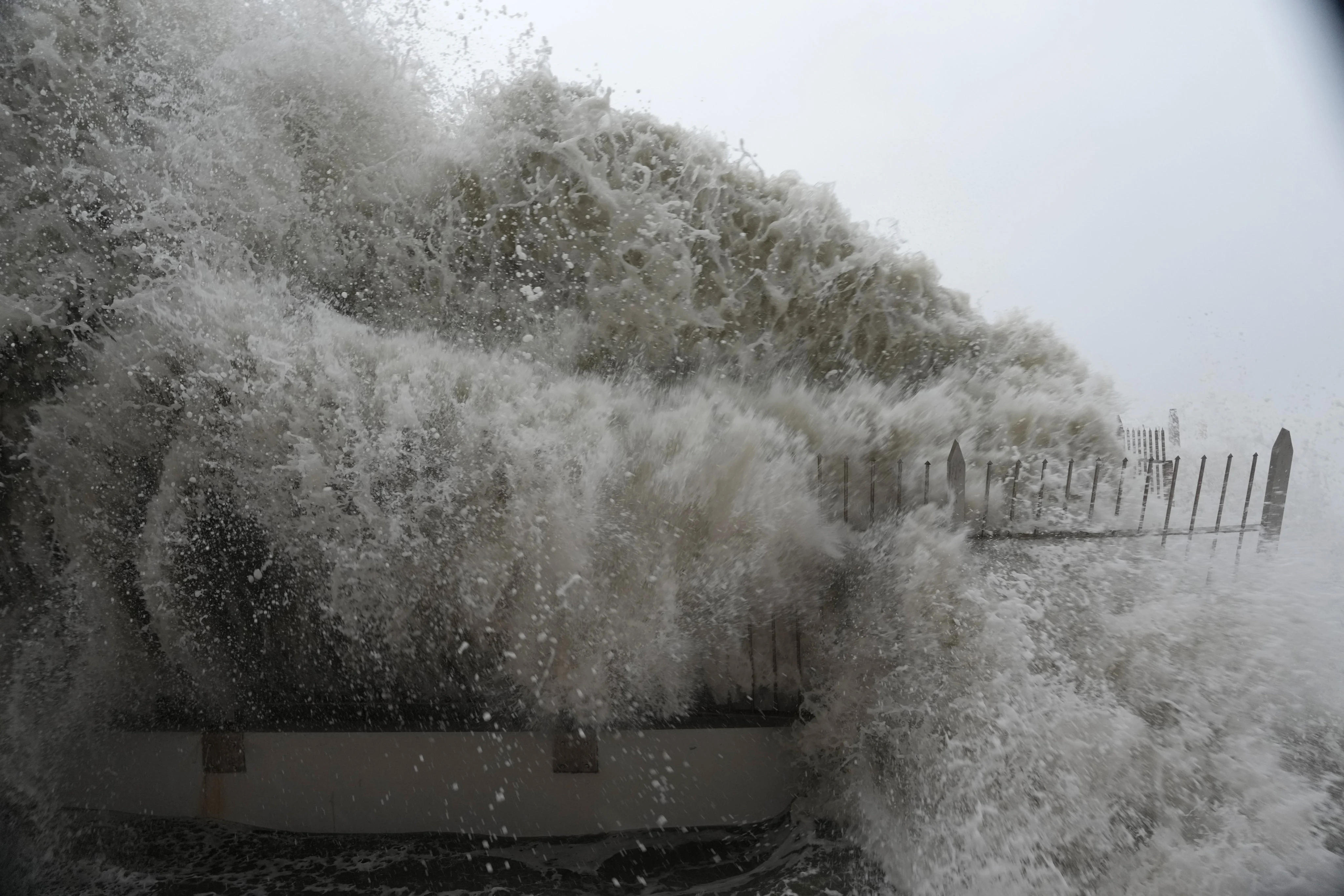By Biman Mukherji
Copyright scmp

Super Typhoon Ragasa’s trail of devastation across the Philippines, Hong Kong, Taiwan and parts of mainland China has underscored the sobering risks Asia as a region faces from the consequences of climate change, scientists warn, pointing to heavy fossil fuel production and infrastructure lagging behind rapid urbanisation.
Exceptionally warm sea surface temperatures along Ragasa’s path in the South China Sea helped it intensify over 24 hours to become the most powerful storm on Earth this year, packing wind speeds of more than 200km/h.
Independent research group Climate Central says the conditions were exacerbated at least tenfold by human-induced climate change.
“These exceptionally warm sea surface temperatures increased the chances that Ragasa would rapidly intensify,” said Daniel Gilford, meteorologist and climate scientist at Climate Central.
Sea surface temperatures in the western Pacific were 0.7 to 1.1 degrees Celsius above average as Ragasa powered up, according to the group.
Gerry Arrances, executive director of the Philippines-based Centre for Energy, Ecology and Development, pointed out that climate scientists had a decade ago warned of the consequences of limiting global warming to no more than 1.5 degrees, adopting the Paris Climate Agreement.
“Yet in reality, we are nowhere near meeting the goal, and Asia-Pacific can definitely expect worse extreme weather events and devastation. Ragasa and the many other killer storms may be the norm of the future if we stick to business as usual,” he warned.
“Our region has been dubbed as coal’s last bastion, and, in recent years, put forward the vision of becoming a global hub for gas,” Arrances said, but cited “heavily misguided government policies, backed by global northern finance and business interests” as stumbling blocks that had become “a death sentence to our people”.
Earlier on Monday, a 2025 Production Gap Report authored by the Stockholm Environment Institute stated that by 2030, governments planned to produce over 120 per cent more fossil fuels, prioritising this over limiting global warming to 1.5 degrees.
Among the 20 major fossil-fuel-producing countries profiled, Indonesia “continues to view coal production as important for energy ‘self-sufficiency’ and economic development”, the report said, with fossil fuels currently generating 87 per cent of Indonesia’s electricity.
In July, President Prabowo Subianto said Indonesia could achieve 100 per cent of its electricity production from renewable energy by 2035 – five years ahead of its 2040 target.
The report noted, however, that the timeline “is significantly more aggressive than existing commitments and planning documents. Even more conservatively, Indonesia’s latest 10-year electricity supply plan projects just 21 per cent of renewable energy in power generation by 2030”.
Australia, the world’s second-largest coal exporter after Indonesia, has planned for 2030 coal production to be 6 per cent higher than in 2023, declining gradually thereafter, according to the report.
Besides a call to reduce coal production, experts have urged Asian governments to have in place early warning systems and proper weather forecast mechanisms, on top of ramping up infrastructure to withstand extreme weather.
“We also need to strengthen the resilience of our communities and ecosystems to mitigate worse climate change impacts – both of which are endangered by ecological degradation and pollution from fossil fuels and other destructive industries,” Arrances said.
The deadly Ragasa storm followed severe flooding in eastern Taiwan caused by a lake burst on Tuesday, resulting in at least 17 deaths and several people missing.
Although Ragasa was downgraded from a super typhoon to a severe typhoon on Wednesday, it remains extremely powerful and has churned over the South China Sea, posing risks to East Asia.
“This [climate change] can lead to more intense, longer-lasting, and potentially more destructive storms in the Southeast Asia region,” said Anjal Prakash, research director at the Indian School of Business’ Bharti Institute of Public Policy.
“Scientific studies suggest a trend towards higher frequency of severe tropical cyclones and increased rainfall associated with these storms due to global warming,” he added.
Widening impact
Unpredictable climate patterns are not only threatening agriculture and food security, but are also increasingly damaging infrastructure through weathering processes such as sinkholes – sudden collapses of the land surface that have been exacerbated by soil erosion and human activity.
On Wednesday, a 50-metre deep sinkhole opened in front of a hospital in Thailand’s capital Bangkok, sucking in cars and electricity poles. Earlier in March, a motorcyclist died in South Korea’s capital Seoul when a sinkhole suddenly swallowed him.
Such sinkhole activity has become increasingly common in parts of urbanising Asia such as South Korea and Malaysia, driven by factors including heavier rainfall, increased groundwater pumping and ageing infrastructure.
“Sinkhole formations in our region should, indeed, not be dismissed as unrelated to the climate crisis,” Arrances said.
“Intensifying climate change impacts weaken the stability of our grounds – from lower groundwater levels resulting in weak underground support, to high saturation of water from heavy rains and floods that can increase susceptibility to collapse.”
A confluence of factors contributing to climate change such as degraded forests and watersheds combined with intensive development such as rampant construction of buildings exacerbate risks of sinkhole activity, scientists say.
“Heavy rainfall and flooding from typhoons can accelerate ground perturbations, making sinkholes more likely in vulnerable areas,” Prakash said.
Local geological conditions – which primarily drive such sinkhole activity – could be exacerbated by extreme weather events, he added.
Roxy Mathew Koll, climate scientist at the Indian Institute of Tropical Meteorology, said a mix of local geological conditions and land use changes such as for construction, along with weather conditions like extreme rains, was resulting in more sinkholes and landslides.
“Both land use changes and extreme rains are intensifying, so our development projects should take these factors into account to avoid impacts on lives and property,” he added.
According to a report of the Stockholm Environment Institute published in November 2024 titled “The silent crisis of Asia-Pacific’s sinking cities”, many of the region’s growing cities face escalating climate-related risks.
The report said both coastal and inland cities were sinking due to a lack of urban planning and inadequate management of natural resources, with coastal areas also at risk of sea-level rise and frequent climate-induced disasters.
“The consequences place millions of residents and trillions of dollars in physical and cultural assets at extreme risk,” it said.
The threat of land subsidence was most visible in various Asian megacities, with Manila, for example, experiencing land subsidence seven times faster than average sea-level rise between 2015 and 2020.
Climate experts suggest mitigation measures specific to each location.
“Unless we assess and adapt to the risks in a new climate, the impacts of such events will continue to grow,” said Ben Clarke, research associate in extreme weather and climate change at the Centre for Environmental Policy at Imperial College London.
“This is because risk depends not only on the hazard [the weather event], but on the vulnerability and exposure of people and societies, which in turn depend on factors such as rates of poverty and marginalisation, and the existence of measures such as flood defences and early warning systems.”



